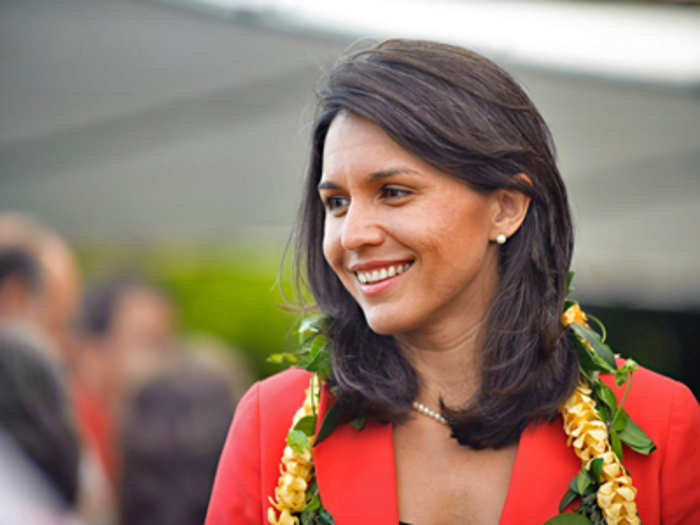THE DIGITAL 50: The 50 Hottest People In Online Politics
Patrick Ruffini, Founder, Engage

Joe Rospars, Founding Partner and Creative Director, Blue State Digital/Chief Digital Strategist, Obama For America
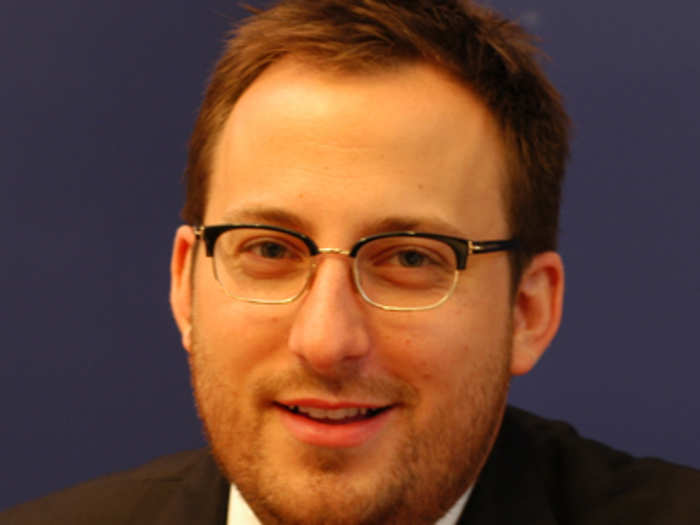
An alumnus of Howard Dean's Internet-driven 2004 campaign, Rospars — along with several of his fellow former Deaniacs — are the masterminds behind Blue State Digital, the Democratic digital strategy firm that has revolutionized online campaign marketing and communications.
The firm — and its team of strategists — were crucial to Obama's groundbreaking digital campaign in 2008 and 2012. Rospars played a major role in the effort, first as new media director for Obama in 2008, and then last year as the Chief Digital Strategist for Obama For America.
In the latter role, Rospars had the opportunity to build what he describes as a "billion-dollar start-up that went out of business in 18 months." The result was a crack OFA digital team that dominated its Republican counterparts on the Internet and forever changed the way that campaigns communicate with voters — and raise money — online.
"In a post-Citizens United, Karl Rove-Crossroads world, we showed that we can win an election with a grassroots campaign built from the ground up," Rospars said.
Now back at Blue State Digital, Rospars says he is working on "applying the lessons of the campaign to other clients," including those in the corporate sphere.
"We're using the lessons and the tools from the campaign to help our clients — whether it's the Green Bay Packers or an advocacy group, really anyone — [creating] authentic, meaningful relationships between organizations and individuals."
Teddy Goff, Digital Director, Obama For America
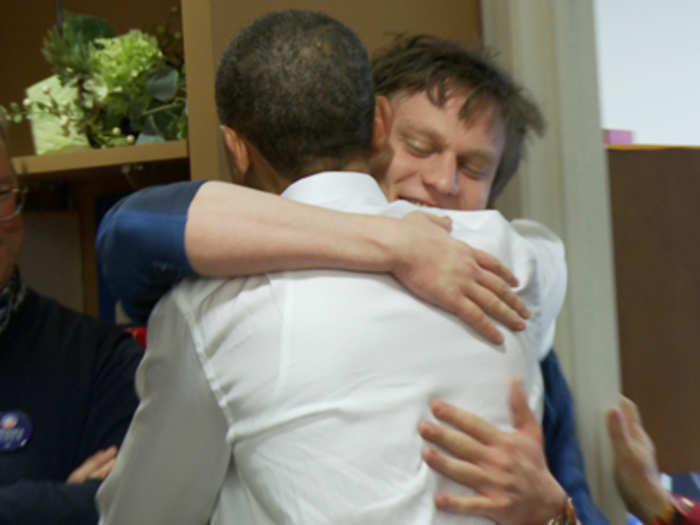
Another Blue State Digital alumnus, Goff worked his way up from an internship on Obama's 2008 campaign to become Digital Director of Obama for America.
In that role, the 27-year-old Goff ran a team of 200-plus digital strategists, who together harnessed the transformative power of social media and online content in a way that no campaign had ever done before.
"What the rise of social has meant is that every single person — not just the undecided voter living in a battleground state, but the Obama supporter living in New York or California — has a role to play in our politics, and the chance to help decide the outcome," Goff told Business Insider. "President Obama had around 34 million Facebook fans on election day. Those people were friends with 98 percent of the U.S.-based Facebook population — that's more than the number of people who vote."
The biggest takeaway, Goff added, was the realization that the campaign's supporters actually had a lot more power than the campaign itself.
"The most important thing we could do was keep them engaged, keep them inspired, and put them to work," he said. "That's a very different mindset than one that's all about squeezing every last penny out of people, or trying to maximize impressions whether or not the content is any good."
Matt Lira, Senior Advisor, House Majority Leader Eric Cantor
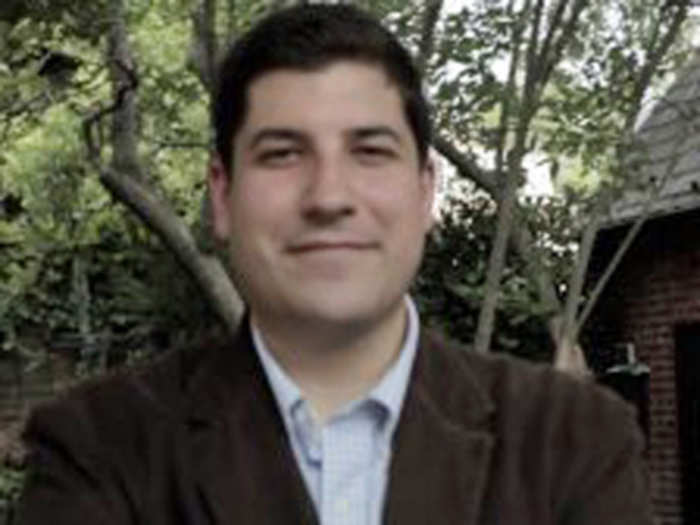
Earlier this month, Lira was promoted to the position of senior advisor from the director of new media — a move he said wouldn’t have been possible five years ago.
Lira has been at the forefront of changing the way voters interact with Congress in a method he says attempts to be non-partisan. For Lira, the challenge is to engage everyday citizens in issues that matter to them — even though they might not be aware of them because they won’t get much news coverage.
“How can we leverage digital platforms so that it means more to people?” Lira said. “I believe there’s a great mass of knowledge, talent, expertise, and such out there that can be engaged in a more sophisticated manner.”
“We want to make it so that the public can engage more holistically in what Congress is doing,” he said.
Eventually, Lira hopes to enable crowdsourced amendments on bills. For example, if there’s an education bill being written, it could be crowdsourced to teachers, who would identify any problems or glaring omissions.
Marie Ewald, Deputy Digital Director, Obama For America
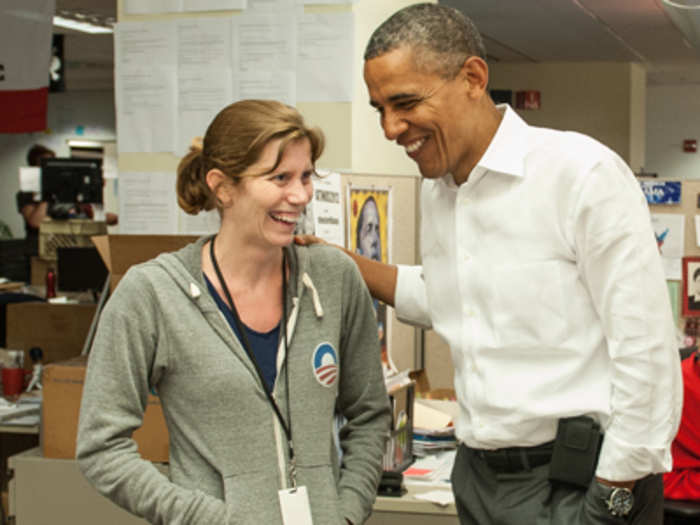
As Goff's right-hand woman, Ewald was indispensable in executing the Obama campaign's revolutionary digital strategy, and in overseeing OFA's massive digital team.
In particular, Ewald played a big role in overseeing digital analytics department, spearheading the data-mining and relentless A/B testing that defined OFA's digital strategy. She also played a key part in pioneering OFA's groundbreaking social networking and online fundraising efforts, helping the campaign to build a grassroots army of volunteers.
"It was about building relationships with people," Ewald told Business Insider. "And then empowering those people to become involved in the political sphere, and giving them the most user-friendly, advanced tools we could to do that."
Lauren Miller, Digital Director, Sen. Elizabeth Warren (D-Mass.)
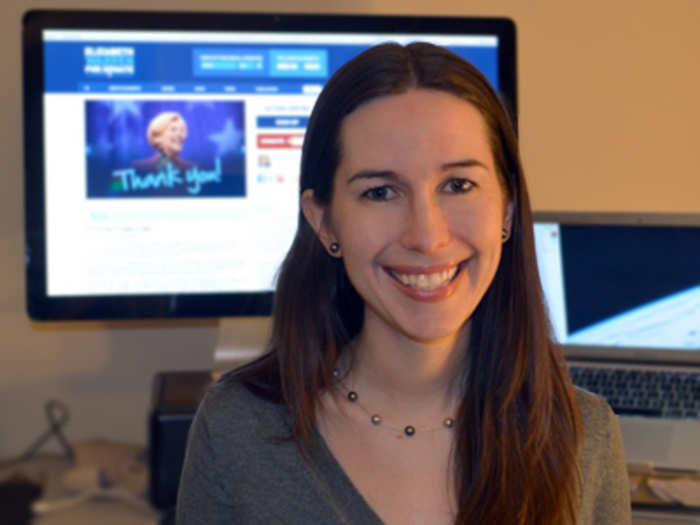
A six-year veteran of Blue State Digital, Miller left the firm in 2012 to run digital strategy for Warren’s Massachusetts Senate bid. As the campaign’s new media director, Miller established of the most sophisticated digital programs outside of the Obama campaign.
She is now moving that operation to Capitol Hill, where she is the digital director of Warren’s new Senate office. In that role, Miller faces the daunting task of keeping Warren's national network of supporters engaged in the decidedly unsexy process of legislating.
"We're attempting to take the same excitement and energy for the campaign and translate that into a grassroots army that's excited about a legislative agenda," she told Business Insider. "It's one of the trickiest things to do."
It's also a new challenge for Miller, who, prior to leaving Blue State Digital, was known as one of the best emailers in the digital campaign biz. Miller says that she is still trying to navigate labyrinthe Senate regulations and adjust to the slower pace of governance.
But she added that she hopes to be a "trailblazer" for other Senate offices as they incorporate digital organizing and communications strategies into their work on the Hill.
Erie Meyer, Editorial Director, Consumer Finance Protection Bureau/Founder, TechLadyMafia

The Consumer Financial Protection Bureau — the embattled agency created as part of Obama’s Wall Street overhaul — has become a mecca for digital do-gooders and open-source evangelists. The agency runs itself like a tech startup, with the goal of creating an efficient, participatory, transparent government that replaces ideology and partisanship with data and results.
As a digital strategist for the CFPB, Meyer is responsible for using helping consumers use the Bureau's tools to help navigate financial decisions — a job that Meyer describes as "thrilling."
"Before, when I was working in digital advocacy, it was all about agitating toward what could be," Meyer told Business Insider. "At CFPB, everyday we're trying to see what we can actually do."
When she's not at the Bureau, Meyer is the co-founder of TechLadyMafia, an online community whose only membership requirement, she says, "is being awesome and being a Tech Lady." Members, which include women from all areas of tech and all parts of the world, primarily communicate through the group's listserv, as well as through its Tumblr and Twitter feed, @TechLadyMafia.
Harper Reed, Chief Technology Officer, Obama For America
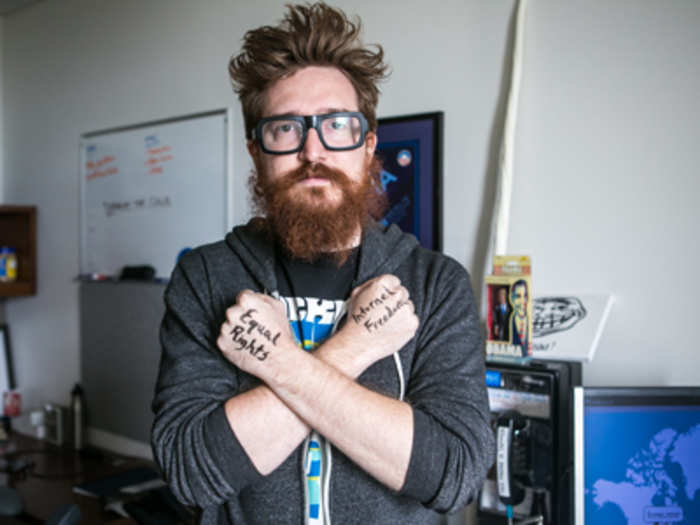
Reed, the former CTO of the crowdsourcing company Threadless, exemplifies the Obama campaign’s penchant for hiring non-traditional employees to fill important roles in its campaign strategy. Reed helped to build the system of data that identified which certain Obama campaign volunteer should knock on a certain voter’s door at a certain time with a certain message.
“What we did allowed people in the field doing important work — we tried to make their jobs easier,” Reed told Business Insider. “We offered the field team and everyone involved the ability to do more work with less effort.
Reid led a staff of about 40 engineers — up nearly tenfold from 2008 — who were hired away from top companies like Google and Twitter. He credits that to the higher-ups at the campaign identifying the importance of data-mining in the campaign early on and placing a heavy emphasis on it throughout.
“I don’t think Republicans understood the difference,” Reed said. “I don’t think they got how impactful technology and early investment would be in determining the outcome.”
Carol Davidsen, Media Analytics, Obama for America

Davidsen wrote the Optimizer, which analyzed television demographics and allowed the Obama campaign to use its ad money much more effectively than the Romney campaign, purchasing cheap, targeted ads to focus on a specific set of voters, instead of buying expensive ads on national television programs.
The Obama campaign bought detailed data on television viewing by millions of American cable subscribers, according to the Washington Post. The data showed, among other things, which channels subscribers watched, able to break it down to the second. The Obama campaign was then able to match the information, via a third-party, to its internal list of voters and poll responses.
“The optimizer doesn’t take into account the program at all,” Davidsen told WaPo in November. “But there’s a sanity check at the end to make sure that you’re not advertising on ‘Girls Gone Wild.’ ”
Amelia Showalter, Director of Digital Analytics, Obama For America
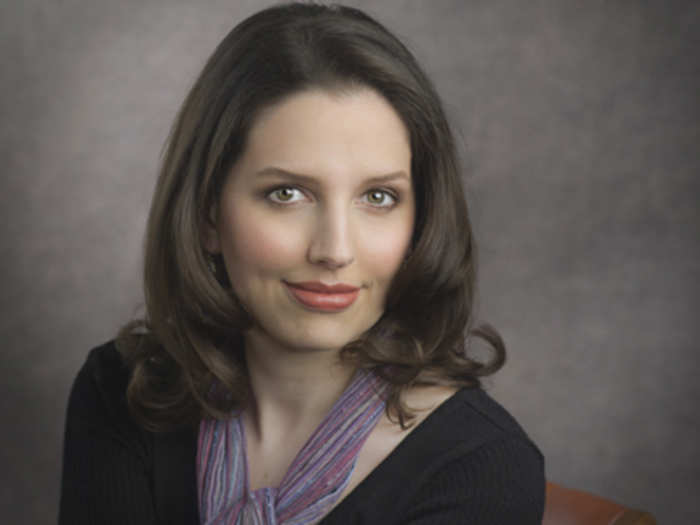
As the head of digital analytics for Obama's re-election effort, Showalter played a key role in making Obama for America a completely data-driven campaign. She led a team of 15 analysts who refined the use of statistical modeling and predictions, and used data to make every aspect of the campaign — from email, to online fundraising, to Twitter – more efficient.
“Digital is different because of how quickly you can run experiments — we got a lot of input back very fast,” Showalter told Business Insider.
Now that the campaign is over, Showalter has opened up her own consulting shop to help campaigns and organizations incorporate some of the data testing that OFA used in 2012.
“The real innovation wasn’t so much that we developed a set of best practices, but that we did so much testing on everything,” she said. “A lot of organizations aren’t doing as much of that as they could be doing.”
Toby Fallsgraff and Martha Patzer, Email Gurus, Obama For America
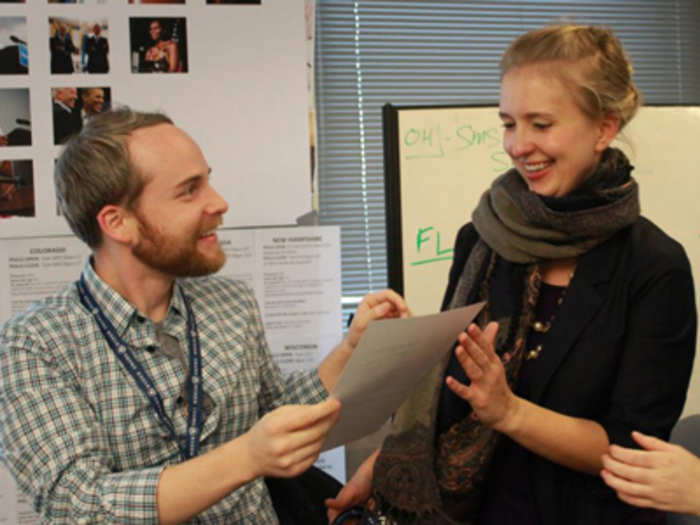
Fallsgraff and Patzer were the masterminds behind the Obama 2012 campaign’s relentless — and often amusing — emails, one of the most talked-about aspects of the campaign.
Together, the pair developed the campaign’s email best practices and oversaw 18 writers who used emails to boost the campaign’s volunteer recruitment, voter mobilization, and grassroots fundraising efforts.
“When the campaigns started, there was all of this talk about super-PACs and big donors, but at the end of the day, what really got us to the finish line was the 4.5 million grassroots donors that the Obama campaign had on its side,” Fallsgraff said. “Email played a big role in finding those donors, and in getting them to donate more than once.”
Patzer attributed this success to the relentless testing of email messages. The team, she said, tested everything from the subject line to the size and color of the Donate button.
“We gave people the program that they wanted,” Patzer said. “We tested things, and then we would send the things that people had responded to.”
“One thing we always tried to do was be as authentic and as transparent as possible,” she added. “Treating people on our list like adults, like we were all on the same level, was really cool, and it gave us the ability to be creative. We weren’t trying to pull one over on people.”
“What we learned was that you can be constantly improving on a desk program in digital politics," Fallsgraff said. "We never ran out of things that we were looking at and improving upon — if the election was going to be held next November instead of last November, we still wouldn’t run out of things to improve and test. The challenge for the next campaign is to pick up as close as possible to where we left off.”
Correction: The OFA email team was led by three people, Toby Fallsgraff, Martha Patzer, and Lindsay Holst. We apologize for the oversight.
Nick Schaper, Senior Vice President, Engage
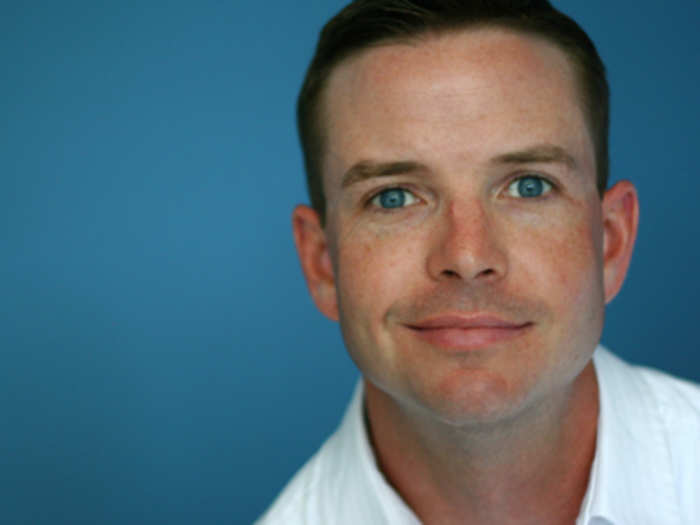
A former staffer on House Speaker John Boehner's digital team, Schaper is widely credited with leading the digital communications effort that boosted Boehner to the speakership in 2010. His success working on digital operations in Boehner's office came at a time when most House members still didn’t have staff members solely for digital purposes.
“It’s been an amazing experience to watch the culture change from having to explain the importance of digital just a few short years ago,” Schaper said. “It’s changed 180 degrees to where everyone now is, ‘Go, go, go’ on digital.”
In 2011, Schaper moved onto an executive director role at the U.S. Chamber of Commerce, where he helped ramp up their digital efforts. Now, he moves to engage, joining the Republican digital communications firm as a senior vice president.
Marci Harris and Rachna Choudhry, CEO and Chief Marketing Officer, POPVOX
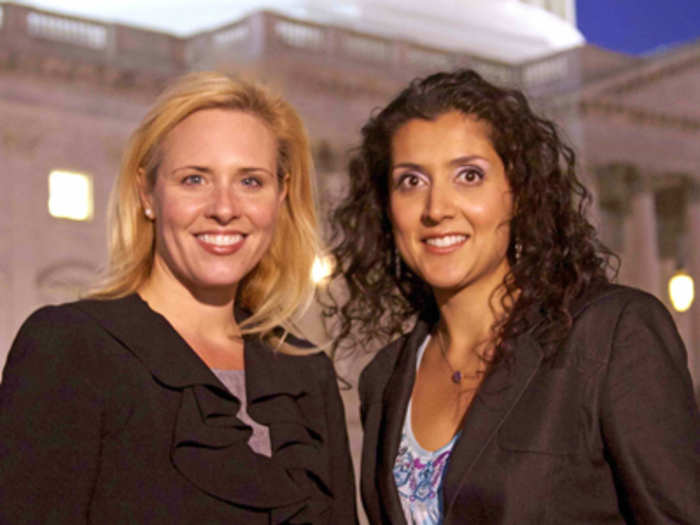
POPVOX was born in 2009, when Choudhry, then a federal lobbyist, and Harris, then a congressional staffer, were seated next to each other at a Washington dinner party, and shared their gripes about the sluggishness of communications on the Hill.
The POPVOX site, which launched in 2011, functions as an aggregator for all of the bills that go through Congress, providing information about who has gone on the record supporting or opposing legislation. Organizations can build their own pages to support or oppose bills on POPVOX, and individuals can weigh in to leave a message. POPVOX then verifies and distributes those messages, with the relevant metadata, to legislators, streamlining the information in a way that easily fits into their data systems.
"This is really the first time that there has been a public record of what Congress is hearing," Harris told Business Insider. "It provides a level of transparency that has really never existed in Congress, and certainly has never existed for the rest of us."
By simplifying the process, POPVOX has also helped to increase engagement with Congress, Harris said, empowering individuals to participate in the discussion surrounding legislation in a way that they may not have done before.
Matthew Gagnon, Director of Digital Strategy, Republican Governors Association
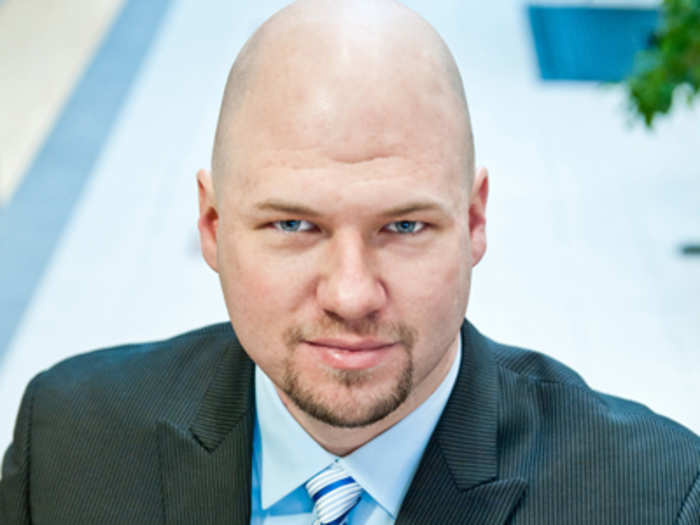
Compared to the rest of Republican races on a national scale, Republican governors have done extremely well for themselves — in fact, an incumbent hasn’t lost a race since 2007.
Gagnon has played a huge role in those efforts. As the RGA's digital director, he has helped Republicans to 30 of the nation’s 50 governorships.
“The most important thing in terms of our success has been that folks have been willing to try things,” Gagnon said.
One of the most significant triumphs for the RGA came in the recall election of Wisconsin Gov. Scott Walker, who became the first governor in history to successfully stave off a recall challenge.
On the digital side, Gagnon and company were able to use data to their advantage, targeting specific subsets of people they were able to sway to their side. The most important phase of the campaign came when Democrats held their nomination process. In part, the RGA’s efforts helped Walker go from a dead heat to a 5-point lead by the time Democrats nominated Milwaukee Mayor Tom Barrett.
“Obviously, big data stuff is very important to us. But more important than big data is smart data,” Gagnon said.
Through that smart data, the RGA was able to target voters in the middle and reinforce their message across digital and non-digital platforms.
Aaron Strauss, Director of Data and Targeting, Democratic Congressional Campaign Committee
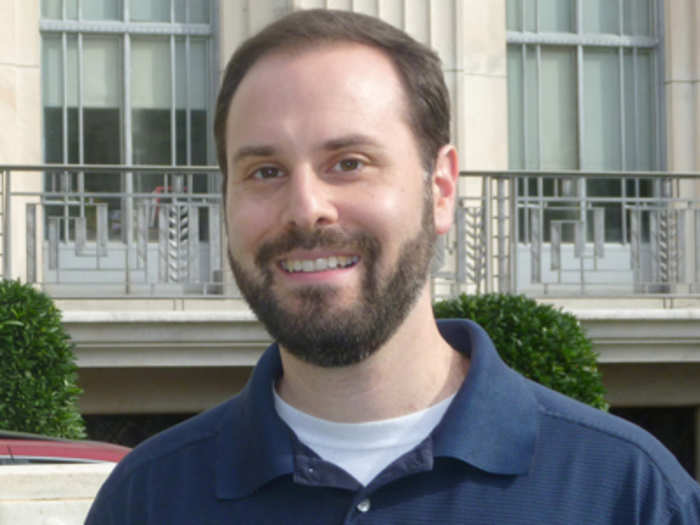
Strauss has been a leading proponent of incorporating scientific experimentation and data analysis into politics for the past decade, conducting work that has revolutionized the way that Democratic campaigns and progressive groups identify and target persuadable voters.
Strauss began his work in politics during the 2004 presidential campaign, when he built a next-generation voter database to help campaigns organize supporters and identify persuadable voters. In 2006, he wrote a program that allowed canvassers to use Google maps, a tool that is still the basis for canvassing software used by Democratic campaigns today. He also got his Ph.D in microtargeting and political methodology, completing his dissertation on tailoring messages to specific audiences.
For the 2012 election cycle, Strauss was tapped to help the DCCC overcome the GOP's spending advantage with a heightened data and targeting effort.
At the DCCC, Strauss revolutionized the committee's polling by introducing in-house robo surveys designed to help the campaign better identify which districts to target. He conducted experiments and engineered new types of models to find the most persuadable voters within those districts. And he worked with Catalist to develop automated modeling, enabling these tactics to be deployed rapidly across all competitive districts, maximizing targeting efficiency.
Strauss will leave the DCCC at the end of this month for a new project. He wouldn't give details, except to say that he will be "further innovating the space of digital analytics and politics, figuring out what works and what can be done better to target voters and improve communications strategies as a whole."
John Lee, Chief Operating Officer, NGP VAN

Since 2006, Lee has played a leading role in developing and implementing the Voter Activation Network, the voter file and volunteer databases that power the Democratic National Party's VoteBuilder, and which are widely credited with helping Democrats gain a data edge over their Republican counterparts.
As COO of VAN, Lee also played a critical role in the 2011 merger of NGP and VAN, which married the two companies to provide clients with an integrated suite of campaign software, including fundraising, field organizing, and online digital tools that help Democratic parties, campaigns, labor unions, and non-profit groups use their data more efficiently.
Laura Quinn, CEO, Catalist
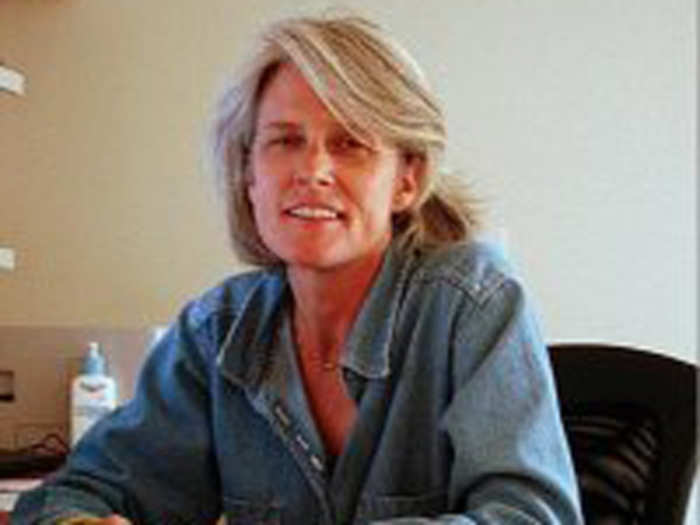
As CEO of Catalist, Quinn runs the firm that, together with NGP VAN, forms the one-two punch of data management for progressive groups, including labor unions and non-profit advocacy organizations. Under her leadership, Catalist has expanded its client base from 19 in 2006 to more than 1,000 organizations.
According to Quinn, Catalist is responsible for collecting the massive amounts of data about voters — from the basic commercial data used in corporate marketing to the more useful information about civic activity, including what groups individuals belong to, their voting records, and how they participate in political and civic life.
"In the past, groups would collect data specifically about their membership, but get rid of all the data they collected about other people," Quinn told Business Insider. "This gives groups a memory of their conversations, and helps them figure out what their strategies should be to better connect with people going forward."
Although the information that groups collect about individuals is proprietary, Catalist also helps its clients by using the aggregate data collected by all of the groups to inform predictive models about voter behavior.
"It's a co-op, in effect," Quinn said. "Progressives didn't have the resources to individually do the data searching in the way that we can do, but together they can cut those costs. We give them much more capacity between elections."
Cyrus Krohn, Co-founder, Crowdverb
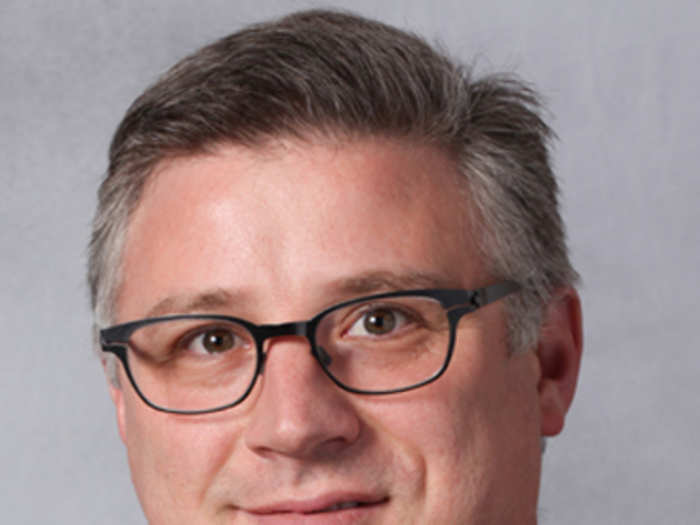
A veteran of Microsoft and the RNC, Krohn has been on a quest to help the GOP regain its technological edge since departing his post as the RNC's chief digital strategist following the 2008 election.
To fulfill his mission, Krohn and fellow Republican digital strategists Todd Herman and Sally Poliak co-founded Crowdverb, a Seattle-based digital mobilization startup uses a data-driven approach to better identify voter perceptions and behaviors and use that information to inform online mobilization and communications strategies.
Although Crowdverb operates outside of the party system, Krohn continues to be a leading voice in challenging the Republican Party to revamp its digital strategy.
"As the Republican Party determines what its going to do with itself, how it is going to restructure, the clock continues to tick," Krohn told Business Insider in November. "That is a problem that we cannot wait until six months before the midterm cycle to address."
"We've got to change the paradigm from looking at ourselves as a campaign-to-campaign party, and make the decision that the technology is going to be at the forefront of how we conduct ourselves, and use the data from that approach to inform how we market and communicate and interact and get rid of a lot of the subjectiveness, and define our strategies and tactics more scientifically."
Bob Ellsworth, Chief Technology Officer, Crowdverb
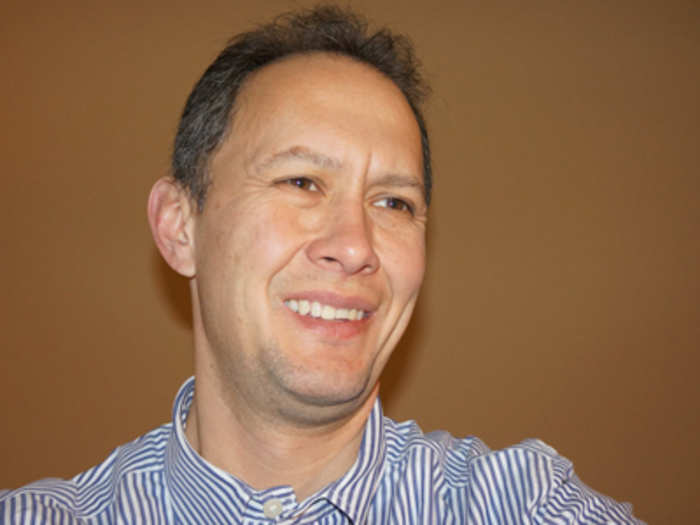
A longtime tech strategist, Ellsworth was a lead architect of the Republican Party's next-generation digital platform.
As the RNC's Senior Fellow of Technology from 2008 to 2010, he built the party's online marketing tools and digital outreach, as well as the platform architecture for gop.com and its related rapid response microsites.
At Crowdverb, Ellsworth is responsible for building the firm's data systems, applying the lessons he learned in the political sphere to both campaigns and corporate clients.
For campaigns, Ellsworth said, the next challenge will be using data not only to target voters, but also to figure out how to allocate resources most efficiently.
"We're in the first pitch of the first inning of a double header," he said. "This is just the beginning."
Betsy Hoover, Director of Online Organizing, Obama For America
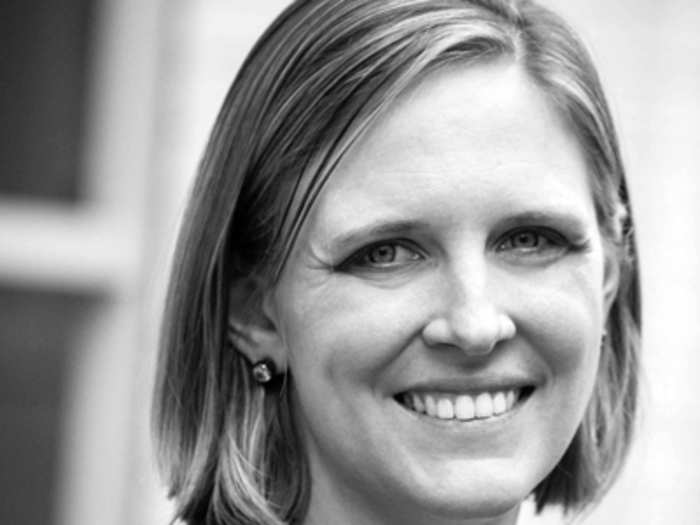
As digital organizing director for Obama's 2012 campaign, Hoover led the team's groundbreaking integration of digital tools into traditional campaign organizing.
Those efforts were largely centered around Dashboard, the campaign's virtual field office that enabled volunteers to connect with their neighborhood team, organize events, call voters, and even set up their own fundraising page to get their friends to donate to the campaign.
"We still have this distinction between online organizing and offline organizing, but that isn't right. We should just organize," Hoover told Business Insider. "People are people online and offline, so the more integrated and holistic the approach, the better the experience is for the user, and the more innovative we can be with ways to reach people in a coherent and smart way, the better."
Hoover is now a partner at 270 Strategies, a new grassroots campaign consulting firm started by OFA national field director Jeremy Bird and battleground state director Mitch Stewart.
Chris Hughes, Publisher and Editor-in-Chief, The New Republic

At 29, Hughes has already taken on more challenges than most people do in an entire lifetime. He was the co-founder of Facebook before moving on to coordinate the online operations of Barack Obama’s 2008 campaign.
Where he is now, though, might be his biggest challenge thus far. Last March, Hughes purchased a majority stake in The New Republic, engineering the 98-year-old magazine's recent relaunch, featuring a news-making interview with Obama. Hughes is now tasked with revamping the stalwart liberal magazine to remain relevant — and afloat — in the online world.
“I think as long as we're focused on a high quality of journalism, then we can get to a point where it's sustainable, if not profitable,” Hughes told NPR recently. “It will take some time, but I think we can get there.”
Mindy Finn, Politics and Advocacy, Twitter
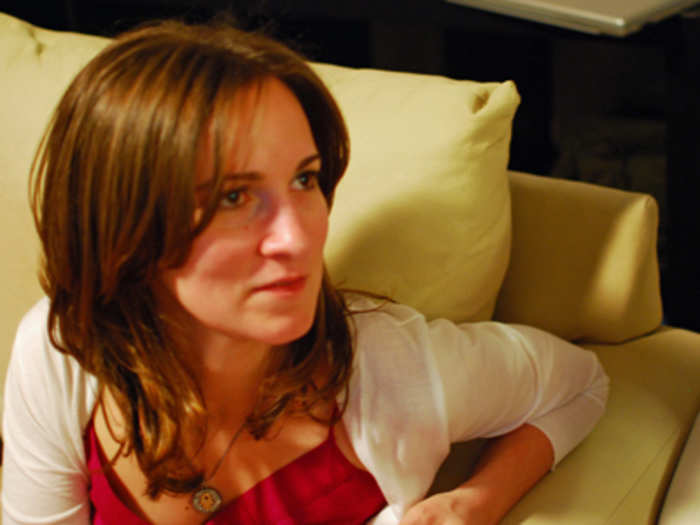
Twitter became ubiquitous in politics during the 2012 election cycle, both as a campaign tool and as a primary means of communication between lawmakers, staffers, their constituents, and the press.
Finn has played a key role in making Twitter the go-to social media platform in the political sphere. As the head of Twitter's strategic politics and advocacy partnerships, she works with political, government, and non-profit groups on developing their Twitter strategies to raise awareness, drive action, and engage in real-time response.
A former Republican digital strategist, Finn says that Twitter has simplified the way that candidates communicate with the media online. Going forward, she believes that the microblogging platform will become even more integral to politics, with campaigns building their Twitter presence on "day one."
"Successful campaigns will have no choice but to engage at all times," Finn said. "Whereas the official statement used to be the historical record of a campaign, in future campaigns, if it's not shared through social media, it's as if it didn't happen."
Katie Harbath, Associate Manager for Policy, Facebook DC
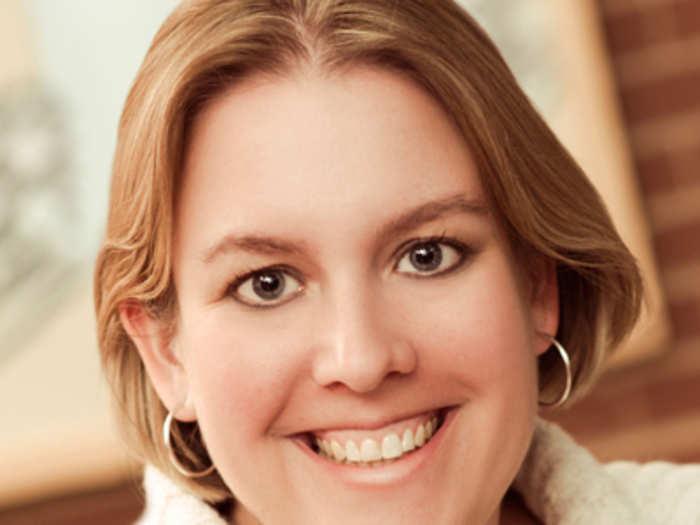
Harbath has been involved in the GOP's digital efforts for the past decade, working on the team that ran the RNC's website in 2004, and directing the Republican Senatorial Campaign Committee's digital strategy during the 2010 election cycle.
Now, as associate manager for policy at Facebook, Harbath helps Republican lawmakers and candidates leverage the social media platform and make sure they are using the site's new features in the best way.
"It's exciting to be working for a company that's setting the code and breaking boundaries for what people can do with technology," Harbath told Business Insider. "The challenge is to take the culture of FB and apply it to an industry like politics."
"There is still a long way to go," she added, "but I actually think there will always be a long way to go — this is always going to be an evolving space."
Ben Smith, Editor-In-Chief, BuzzFeed
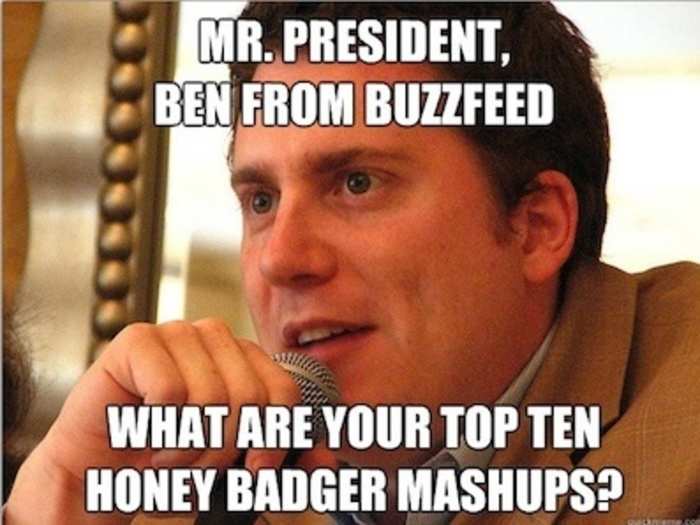
Smith shocked just about everyone in the media world when he left the comforts of reporting at Politico in December 2011 to take on the challenge of memes and listicles at BuzzFeed.
But in just one year, Smith has built BuzzFeed's political vertical into a go-to site for both casual readers and Beltway insiders. And he has shaped BuzzFeed's editorial direction, staying true to the website’s form but adding a lot of scoops and conversation-driving stories to the mix. In the midst of a grueling presidential campaign, The New Republic called BuzzFeed the “defining media outlet of 2012.”
“The fabric of politics has always been gossip and jokes and crazy personality stuff and memes,” Smith told The New York Times recently. “I mean, Dukakis in the tank, that’s a meme. Political coverage that wants to be solely high-minded is missing huge chunks of the actual interplay of personality and power that is what actually drives things.”
Vincent Harris, CEO of Harris Media
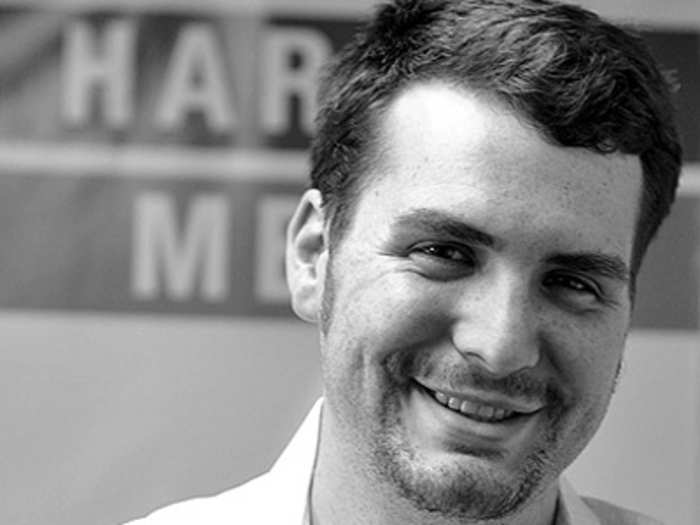
Harris was the digital mastermind behind Texas Republican Ted Cruz's Tea Party-driven 2012 Senate campaign, which harnessed social media and online fundraising tools to build up a grassroots network of support for the then-relatively unknown candidate.
A Texas-based political consultant, Harris has tapped into the deep pool of digital talent in Austin to build up his own communications and marketing firm, a full-service digital shop that designs and builds websites and online fundraising tools, makes web videos, manages in-bound data and rapid response, and places online ads.
In the wake of the 2012 election, Harris has also been a vocal critic of the Republican Party’s digital strategy, pushing the RNC to hire a digital director to implement a long-term, multimillion dollar strategy that will close the tech gap between the GOP and Democrats.
Erica Sackin, Digital Outreach, Obama for America
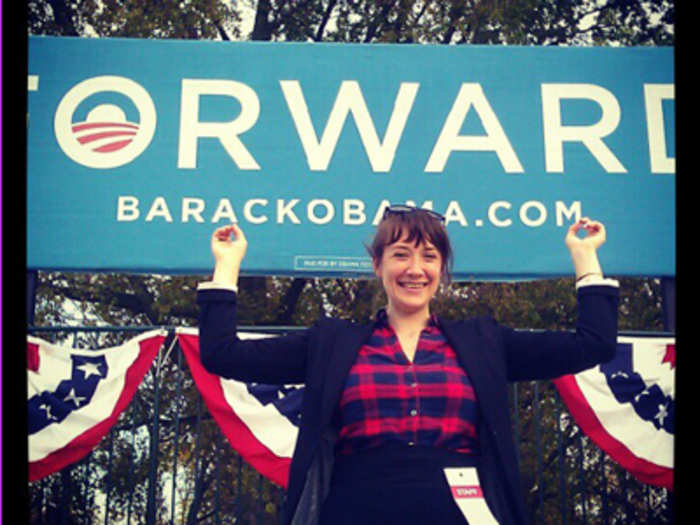
As digital outreach lead, Sackin was the main point of contact between the campaign and the blogging community, developing organization and strategy for communicating with online influencers, from popular Tumblrs to the Reddit community.
“My job was to figure out how best to use the Internet,” Sackin told Business Insider. “There’s no longer a single place people where people get their news. They share a funny website, or retweet something, or post on Facebook or Tumblr or Reddit.”
Sackin’s work was all the more impressive because she basically had to start from scratch: Obama For America was one of the first — and certainly the largest – campaign to develop a communications strategy specifically for the Internet.
“The campaign was really good at talking to people where they’re at,” she said. “The Internet is really where people get their news, so it makes sense to treat the Internet like it is a way that people get their information. It’s the way the world works.”
“Campaigns are about building authentic relationships,” Sackin added. “And that means building those relationships online as well as in person.”
Laura Olin, Social Media Outreach, Obama For America
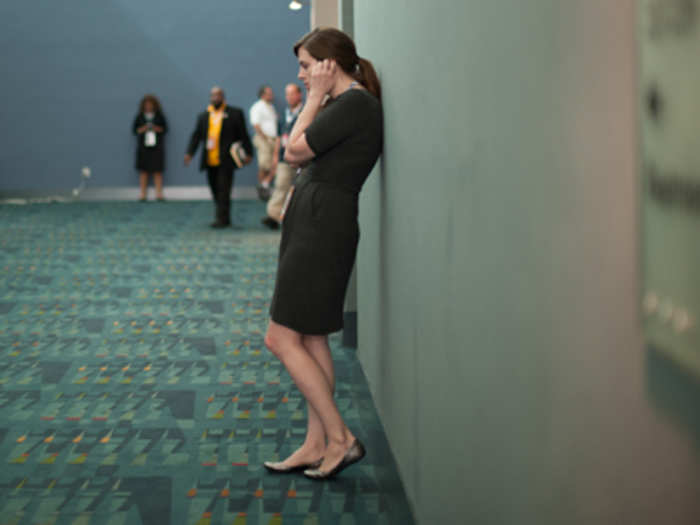
Olin made Internet history on Election Night, when she selected the photo of Barack and Michelle Obama’s blissful hug to post on the campaign’s Twitter and Facebook accounts. The picture, tagged with the caption “Four more years," broke social media records, garnering more retweets and Facebook-likes than any other photo ever.
As chief social media strategist, Olin was a driving force behind the campaign's groundbreaking efforts to use social media as a tool to both mobilize supporters and drive the conversation about the election. And she was the bubbly, and occasionally snarky, voice behind the Facebook, Twitter, Pinterest, Instagram, Tumblr, and Spotify accounts for the campaign as well as Barack Obama, Joe Biden, and the First Lady — a job she says was "nerve-racking," but also "the honor and thrill of my life."
Liz Mair, Founder, Mair Strategies
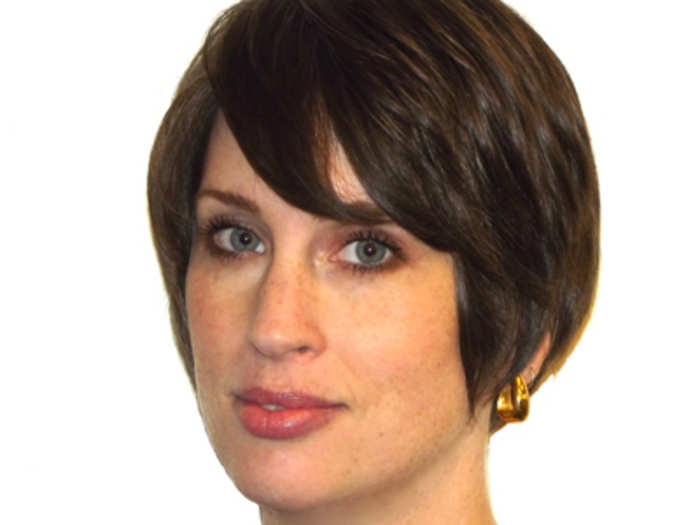
A former RNC digital strategist, Mair now runs her own online communications consulting shop, which advises a roster of Fortune 500, major advocacy and political clients. In 2012, Mair advised Wisconsin Gov. Scott Walker on digital communications strategy for his successful June recall campaign, liaising with Internet media to help the campaign circulate its message online.
In the wake of the GOP's 2012 losses, Mair has challenged the party to rethink its strategies, and particularly its data mining technology and digital communications, in order to close the gap with Democrats before 2016.
"Technological innovation and adoption, as well as the democratization of media, present such a wealth of opportunities for campaigns to do things better, faster and cheaper," Mair told Business Insider. "But in order to capitalize on all that, people have got to get out of their comfort zones, confront their fears, engage and get moving."
Heather Holdridge, Director of Digital Advocacy Strategy, Planned Parenthood

As director of digital advocacy strategy, Holdridge guided Planned Parenthood through its most intense four-day digital campaign of 2012 — a crisis campaign that began when Susan G. Komen for the Cure announced early last year that Planned Parenthood would be ineligible to apply for funding.
Within an hour of the decision becoming public, Holdridge and others noticed how upset supporters were over the decision. By the next day, half of the tweets the organization was producing were retweets of supporters.
Holdridge said that Planned Parenthood learned how to elevate its supporters voices as a role in the crisis.
“A lot of organizations struggle with how to manage between promoting their own communications and elevating supporters,” she said. “What Komen taught us was not only not to fear doing that, but also the incredible power of elevating supporters’ stories.”
Holdridge and the Planned Parenthood Action Fund plan to employ that strategy with another high-profile campaign this year, activating its supporters to rally against Virginia Attorney General Ken Cuccinelli’s gubernatorial campaign, based on his “dangerous” record on women’s health. Last week, the Action Fund promoted a tongue-in-cheek Twitter hashtag, “#CuccinelliBookTitles,” that played off the release of Cuccinelli’s book.
Gerrit Lansing, Digital Director, National Republican Congressional Committee
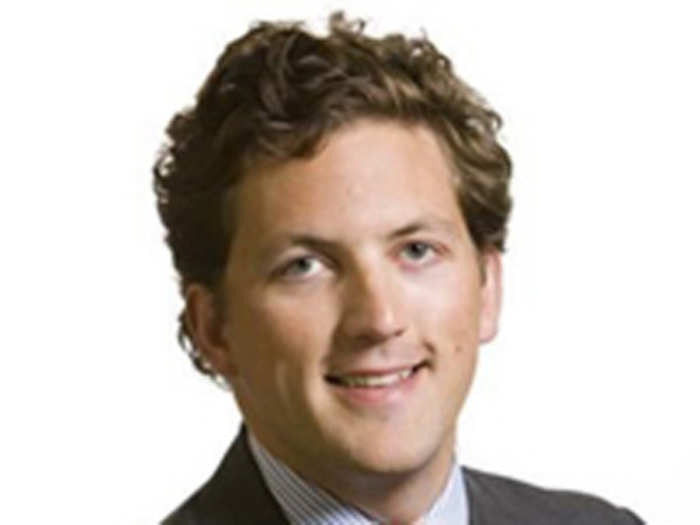
Right before the Supreme Court was set to issue its ruling on the Affordable Care Act last June, Lansing tried an innovative strategy to motivate public opinion. He had people sign their names to an NRCC petition to repeal Obamacare. Then the petition signers could watch as their petitions printed out on a printer inside the NRCC’s Washington offices.
The move caused a stir among Democrats and Obama campaign staffers, but it typified the NRCC’s approach, which adds bite and humor to traditional campaign communications.
“Part of our culture is to have fun,” Lansing said. “We don’t take ourselves too seriously. We like to poke fun at ourselves and at other people....Politics is a little stiff. People who are relaxed about it tend to do a little better."
Under Lansing, the NRCC has tripled its digital staff to nine this year, making it one of the largest digital shops in Republican Party history.
Jess Morales, Senior New Media Strategist, AFL-CIO

During the 2012 election cycle, Morales was part of the team that built the Obama campaign's Dashboard, the program that interacted with volunteers to find a local field team and volunteer for assignments in districts close to them where help was needed.
Now, she is helping to integrate the AFL-CIO, the largest federation of unions in the U.S., into the world of digital politics.
"A lot of work we did at OFA applies here," Morales said. "It's a gigantic institution that operates on many years of history and tradition, but is also trying to figure out how to engage in digital world."
Morales said she is helping to work on a social call tool that will attempt to connect volunteers with friends who are targeted voters.
"We've learned over and over that when people receive calls from people they know, they're infinitely more receptive," Morales said.
Tim Cameron, Director of Digital Media, House Republican Conference
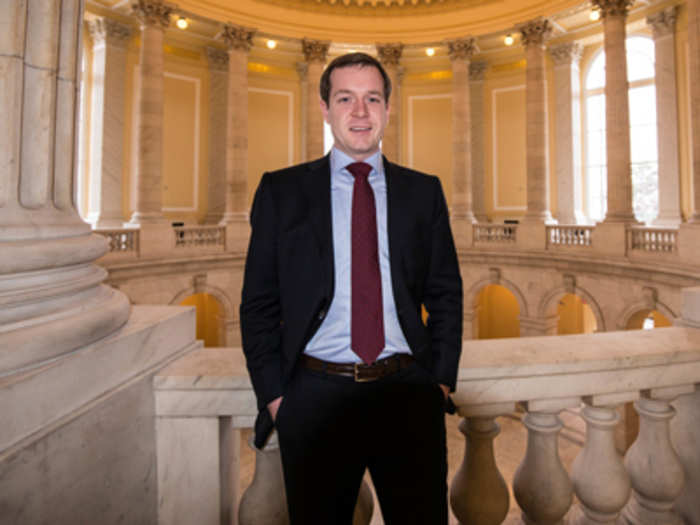
Cameron led the Republican social media effort in response to Obama’s State of the Union address in February, helping to launch a SOTU response website that rebutted the speech in real time. He was also involved in overseeing the launch of a new account — @GOPEspanol — which aims to directly push the party message to Spanish-speaking voters.
The aim, Cameron said, is to “modernize — not moderate.”
“We have three groups that we think our conference needs to be reaching out to — Hispanics, young people, and women," Cameron told Business Insider. "We’re about reaching out to individuals. Our push is not limited to immigration — we will talk about everything from economic opportunity to family values.”
Correction: An earlier version of this post incorrectly named Cameron's title as Social Media Director. His accurate title is Director of Digital Media.
Beth Becker, Founder, Progressive PST
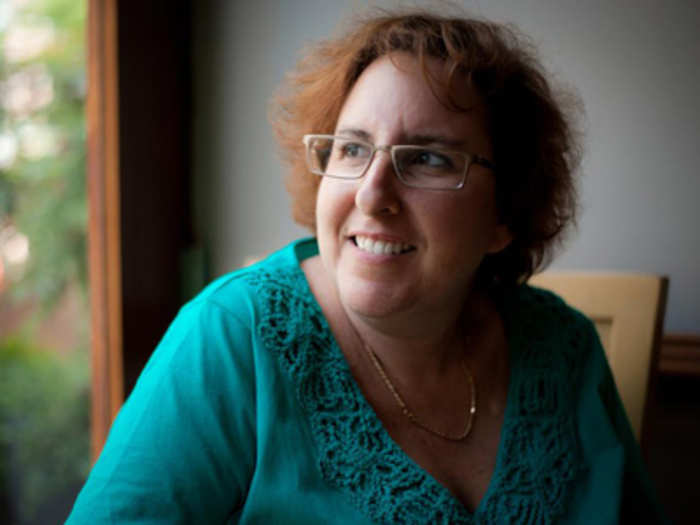
Just a few short years ago, one of Becker’s friends told her after a rant about political candidates’ usage of social media that she should consult.
“I laughed and said, ‘No one’s going to pay me to tell them what to do on Twitter and Facebook,’” Becker said. “The next thing I knew, I was getting paid.”
Becker, a former Daily Kos blogger, has helped liberal candidates gain an edge on social media at Progressive PST, which she helped start in 2009. Now, she’s turning her attention to what she believes is the next frontier in digital communications — sentiment analysis.
As Becker sees it, sentiment analysis can be one important piece of the puzzle in gauging how to market a message to voters. It’s a cheaper way to poll — voters are rated on their “sentiments” about particular issues or candidates based on how they talk about them on social media.
“In a dream world, an organization would do sentiment analysis on Twitter on a certain topic, testing messaging,” Becker said. “Then you do polling, then you create and push out the message. Social media can be both the first and last step in the process.”
Correction: Becker is now a partner at Indigo Strategies.
Brittany Cohan, Deputy Communications Director, Citizens United

Cohan says it’s “insane” to look back at where she was four years ago — when politics was only a “hobby” — to where she is now.
As she tells it, Cohan's real political life began when she met a couple at a 2009 Tea Party rally who showed her how she could tweet on her phone. From there, she turned to Twitter as an outlet to share her political opinions — and to network with other like-minded people.
From there, Cohan joined Wisconsin gubernatorial candidate Mark Neumann’s 2010 campaign. The campaign failed, but Cohan kept working in politics, taking a job in the office of Sen. John Thune (R-N.D.).
In 2012, she was tapped to lead the Republican National Committee’s social media director, running its “Social Victory Center” on Facebook.
“It’s insane,” Cohan told Business Insider of her sprint into the digital political realm, “but it’s the good kind. This is what the movement needs more of. We need folks that don’t necessarily have what people view as acceptable pedigree coming up. That’s where you get your real-world experience.”
Now at Citizens United, Cohan said she hopes that the RNC will devote more manpower to its digital operations in future election cycles.
Gabriela Schneider and Liz Bartolomeo, Sunlight Foundation
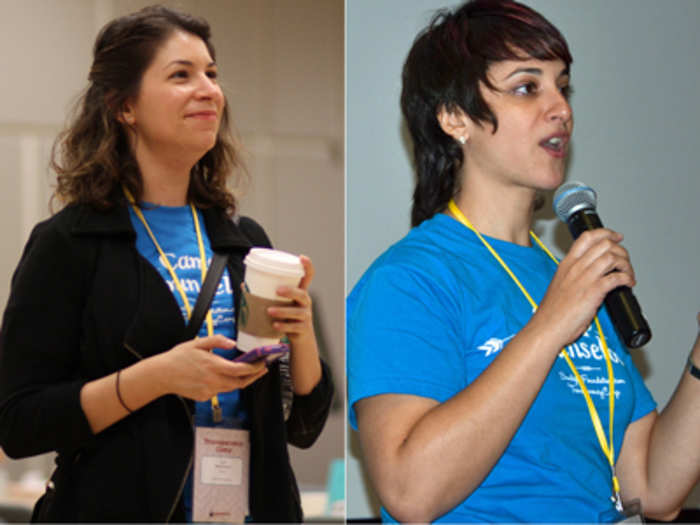
The non-partisan Sunlight Foundation has been at the forefront of a growing effort to use open-source tools to track political influence, improve government transparency, and hold lawmakers accountable.
The organization's digital efforts have been spearheaded by its communications team, under the leadership of Schneider and Bartolomeo. Together, the pair have helped Sunlight increase its online exposure and engagement, and build up an army of volunteer civic hackers.
In particular, the Sunlight Foundation has been a political pioneer in using Tumblr for political communications, using the microblogging platform to pass around the organization's pretty data visualizations. What started off as an experiment is now the Foundation’s largest social media presence, Bartolomeo said, with a 473% increase in Tumblr followers in 2012 alone.
The Sunlight Foundation has hit the ground running in 2013, launching two new open-source projects that will help users track legislative information and open-government related events in all 50 states.
Juliana Rotich, Executive Director, Ushahidi
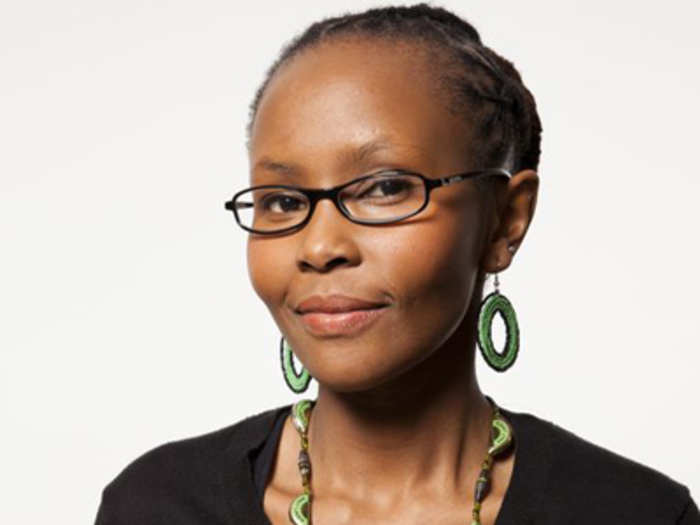
A longtime tech strategist and prolific blogger, Rotich is a leader in developing digital tools for crowdsourcing crisis information and leveraging the power of the Internet to uncover violence.
Rotich's nonprofit group, Ushahidi, was originally inspired by the violence in Kenya's 2007 presidential election, and its software has been used to help the media cover violence in Chile, Haiti, Chile, and the Congo. Ushahidi, Swahili for "Testimony," now specializes in developing free and open source software for information collection, interactive mapping and data curation.
Rotich, a native of Kenya, got her degree in computer science from the University of Missouri, Kansas City, and is a TED Senior Fellow and vice chair of the World Economic Forum Global Agenda Council on Data Driven Development.
Matt DeLuca, GOP Digital Strategist

DeLuca was thrust into the position of victory digital manager at the RNC during the 2012 presidential campaign in May. And post-election, he has identified some of the RNC’s social mistakes — namely, its late start.
“We have approached it from the wrong angle,” DeLuca said. “We only set up shop about a year before the election. The Obama guys have been thinking four, eight years out. That’s the mentality that we need to take from here out.”
DeLuca has since moved into a job as account supervisor for Edelman in Washington, but has stayed active on Twitter in a campaign-type role. He said the key to future success for the GOP lies in the RNC's willingness to think outside the box when it comes to digital and social media strategy.
“People don't trust politicians anymore,” he said. “They trust their friends. There need to be social communications with people, whether in campaigns to sell dish soap or political campaigns. People have to have a connection to that product.”
Steve Geer and Dan McSwain, Democratic digital strategists
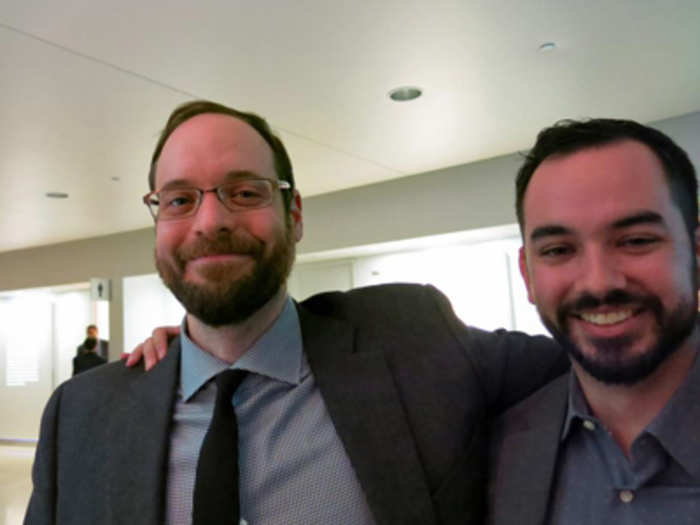
Geer and McSwain, two veteran digital strategists on the Democratic side, were behind the guerrilla-style digital strategy of American Bridge super-PAC during the 2012 election.
According to American Bridge communications director Chris Harris, the pair was particularly helpful with the super-PACs "Mitt Gets Worse" project, a popular LGBT-rights campaign, and its Actually.org celebrity/comedian video series, which racked up more than 2 million views.
In addition to their work with American Bridge, Geer and McSwain also ran digital operations for the 2012 National Voter Registration Day, which registered nearly 400,000 voters in just one day. And they've been running Wikipedia's online fundraising strategy for the past three years.
Now that the 2012 campaign is over, the pair has split up to work on separate projects: Geer is running digital strategy for New York Mayor Michael Bloomberg's "Demand A Plan" gun control campaign, while McSwain is heading up digital communications for Voto Latino's immigration reform efforts.
Tabitha Hale, New Media Director, Franklin Center for Government & Public Integrity

Hale, a conservative blogger and the director of online outreach at the Franklin Center for Government & Public Integrity, has been one of the GOP’s most vocal post-election critics, urging the party to modernize its digital approach.
“Conservatives will continue to lose unless they understand that they need to take the fight to where people actually live,” she wrote in a scathing blog post after the 2012 election. “The majority of Americans do not live in the conservative news sphere. They do not tune in to talk radio, nor do they attend political gatherings or rallies. They’re not following you on Twitter.”
Still, Hale says she sees the party starting to make strides.
“Obviously after you take a beating, have to do a lot of soul searching,” she said in an interview with Business Insider. “There is a lot of introspection and pointing fingers after that happens. Now, I think people are starting to see the bigger picture.”
“This is do-or-die time for Republicans,” she added. “People hate the brand. You have to talk about the issues. We’re not all old, white guys that hate gay people.”
Sacha Dratwa, Social Media, Israel Defense Forces

In November, Israel launched a social media offensive to present the nation's military in a positive light after it began airstrikes in Gaza. One of its most controversial moments came when its account, @IDFSpokesperson, tweeted video trumpeting the assassination of Hamas leader Ahmed Jabari.
The man behind that account, Tablet magazine discovered, is Lt. Sacha Dratwa, a 26-year-old immigrant from Belgium. Dratwa has been in charge of the IDF's social media presence for the past two years and, according to Tablet, has "turned it into the most globally visible arm of the Israeli military." That's even more impressive when you consider that Facebook only opened up in Israel around 2008-09, according to Tablet.
“We want to explain to people what happens in Israel, simply,” Dratwa told Tablet in November. “We believe people understand the language of Facebook, the language of Twitter.”
Glenn Beck, The Blaze/The Blaze TV
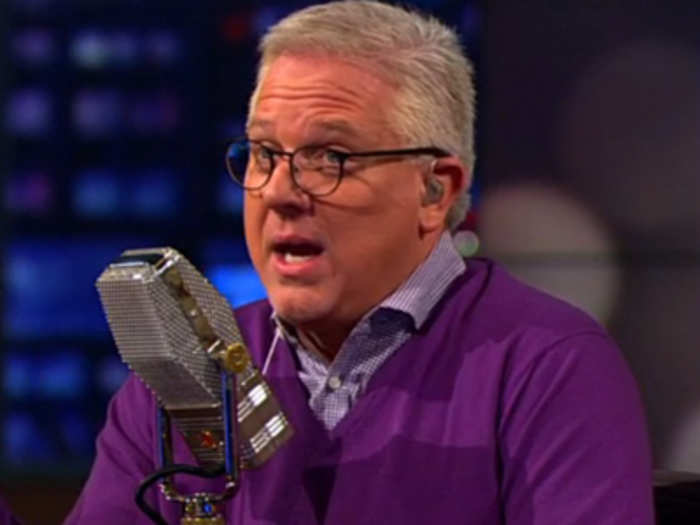
After disappearing from the spotlight after his Fox News departure in 2011, Beck has re-emerged as a prominent voice in conservative media through TheBlaze and TheBlaze TV.
Beck's one-hour show is the centerpiece of TheBlaze TV, but he has built something of a digital empire with other contributors gaining a following. The B.S. of A. with Brian Sack, a weekly comedy show, and the daily news show Real News from The Blaze are two of the examples of Beck's expansion from personality to media conglomerate.
Beck also has some more wild plans to expand on his newfound digital success. This summer, he plans to host an event in Salt Lake City this summer called Man In The Moon, something his website describes as an "exciting new stage spectacle by America’s premiere storyteller."
Andrew Sullivan, Founder, The Dish
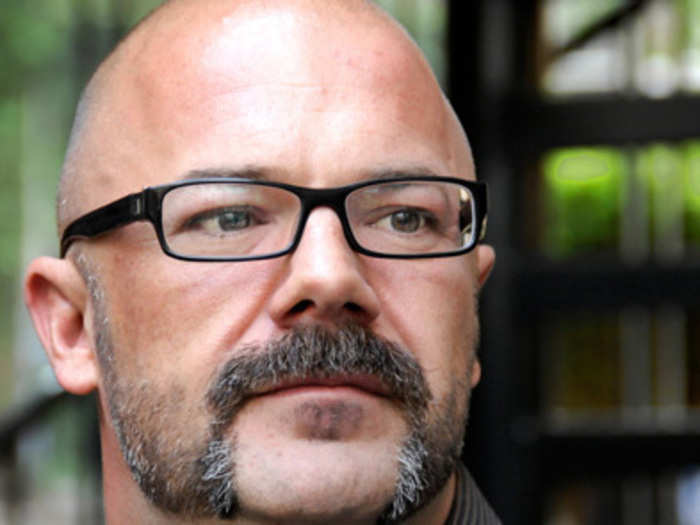
Early this year, Sullivan made the surprising announcement that he would split from The Daily Beast and run his blog independently. It's a daring new media venture that is rather unprecedented.
But if anyone can pull it off, it's someone like Sullivan, one of the few Internet brands in political media who can drive a news cycle with his opinions. On the other hand, it's risky — Sullivan left a life under the institutional umbrella of The Daily Beast that provided him with financial security and prominent billing.
But if his project works — which Sullivan concedes is still a big if — he sees the tides of web journalism changing. He said some of the bigger names in the media world could follow him into independence if his model succeeds. Nate Silver was one name he mentioned to Business Insider.
Sullivan told Business Insider that he has raised about $575,000 total for his new venture by the middle of February.
Emily Zanotti, Blogger, NakedDC

A strategic partner with Hynes Communications in Chicago, Zanotti is best-known in the digital world for her blog, NakedDC, which provides snarky conservative libertarian take on politics and other assorted news. She was also one of the brains behind the “Hey Girl, It’s Paul Ryan” meme that went viral during the campaign.
“It was so interesting how something that we thought was funny resonated with people across the country,” Zanotti told Business Insider. “The site still gets about 10,000 hits a day. … We’ve seen him pinned up in Capitol Hill offices.”
Zanotti said she’s trying to make politics interesting and engaging for people who don’t normally search out political news.
“The purpose is to bring politics to people who aren't necessarily always reading about politics,” she said. “I try to make it more fun, conversational — make it more in line with younger taste and in a funny way. An aspect of entertainment definitely better brings the message to people.”
Erick Erickson, Editor, RedState
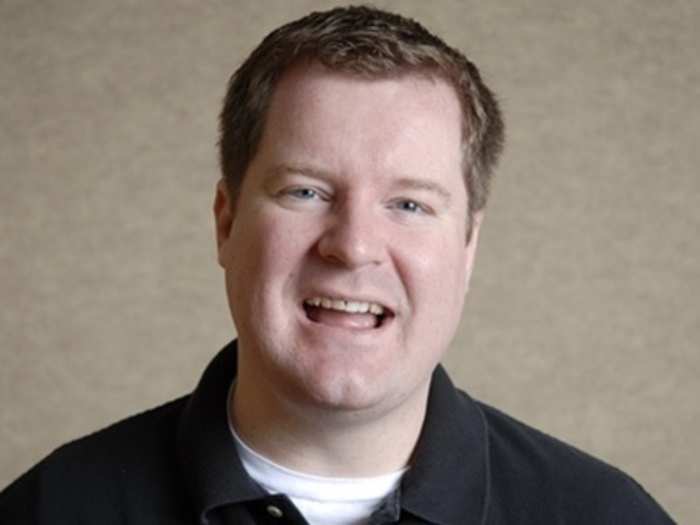
Over the past four years, Erickson has become one of the most powerful and influential conservatives on the web. His blog, RedState, provides a good barometer of conservative sentiment, and has gained influence over the past few years, breaking scoops about the Republican Party.
Erickson was a go-to conservative contributor on CNN until he left the network this year for Fox News. He is also one of the more realistic-minded conservatives on the web, predicting a year before the election that Mitt Romney would lose because of, well, the reasons he eventually lost.
Anthea Watson Strong, Senior Politics Project Manager, Obama For America

After working for the Obama campaign for the first half of 2012, Watson Strong joined the Google Politics team to help the company's efforts to build online tools that inform people of essential voting information, such as polling place location and directions, and candidate lists.
The role is an extension of Watson Strong's work at the New Organizing Institute, where she ran the Voting Information Project — "an effort to collect, standardize and distribute, through an open API, a nationwide database of polling locations and election information." That data was used by Google, Microsoft, Foursquare, and AT&T.
Matthew Dybwad, Digital/Media Partner, CRAFT
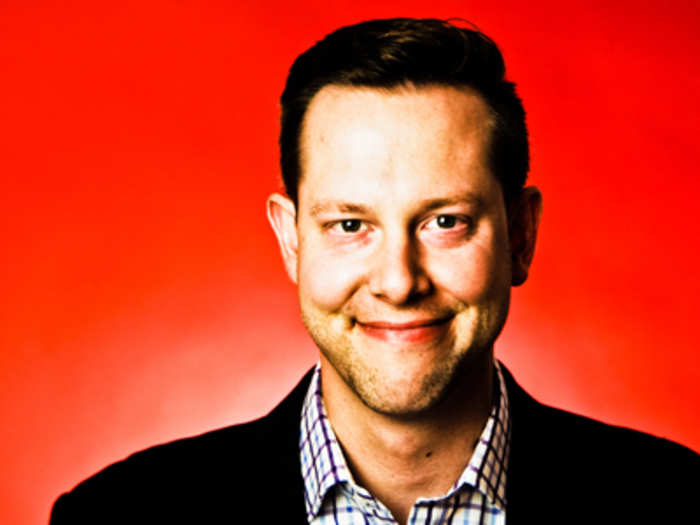
Dybwad is a founding partner at CRAFT, an innovative Republican new media company that incorporates elements of communication consultation and media, digital, and print services for political candidates all in one.
“We saw that there was a huge flaw in the system,” Dybwad told Business Insider of the formation of CRAFT. “Campaigns were getting bad advice from all over the place. We’re a one-stop shop all in one — better campaigns for less money that reach more people.”
One of Dybwad and CRAFT’s most pleasant surprises of the last election came in Congressional candidate Mia Love, the mayor of Saratoga Springs, Utah. Although Love lost her Congressional race by 0.31 percent to six-term Democrat Jim Matheson, CRAFT helped make her a star seemingly out of nowhere.
Dybwad thinks that the comprehensive strategy helped make Love into a big name during the 2012 campaign. CRAFT turned her heralded speech at the Republican National Convention — which was carried by exactly no national news networks — into a spectacle, promoting it heavily through various modes of communication.
Dybwad estimated that about half of the donations to Love’s campaign came online — an abnormally large number that serves as a testament to the firm’s work.
“The big takeaway from that race was that it was a great way for us to prove the effectiveness of the integrated model and bringing together different parts of our shop,” Dybwad said. “We proved we could take events that normally would’ve gotten little coverage and make them huge events that got tons of traffic, inches in stories, tons of interest and tons of donations.”
Nate Silver, Founder, FiveThirtyEight
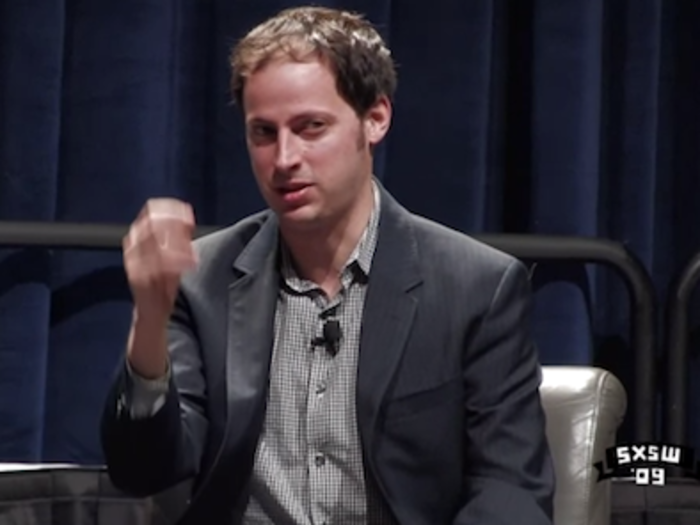
Perhaps no one boosted his standing off the 2012 campaign as much as Silver, who correctly predicted the outcome in all 50 states in November. He also nearly nailed the popular result with his projection model.
Overall, Silver has revolutionized how ordinary Americans view polling and the importance placed on empirical data. The question now is whether Silver can continue to dominate the conversation outside of election years.
Rachel Haot, Chief Digital Officer, New York City

As the first Chief Digital Officer of New York City, Haot is charged with fulfilling Mayor Michael Bloomberg's goal of making New York "the most advanced digital city in the world."
She is responsible for building New York's first-ever "digital roadmap," which she says is a "holistic plan for modernizing the city." The plan includes goals to expand Internet access — including free WiFi in subways and public parks — increase the city's social media footprint, improve government transparency, and strengthen the city's relationship with New York's growing tech sector.
"The world is changing in the ways that we connect and communicate with one another," Haot said. "I think that we will need to continue to focus on that as a city."
The fact that Haot's position even exists is a testament to the way that the Internet has changed how government communicates with its citizens. Under her leadership, New York has taken a proactive role in leading that change, growing its social networks to more than 2.4 million followers across 280+ channels, including Twitter, Facebook, FourSquare, and Tumblr. She is also overseeing the redesign of nyc.gov, which is scheduled to be unveiled later this year.
These online networks underwent a major stress-test during Hurricane Sandy, which required the city to make sure its message was consistent across platforms, while also informing New York residents about emergency services. In the wake of the storm, Haot oversaw the city's partnership with Google on its Crisis Map, and sought ways to expand the city's digital partnerships to help recovery efforts.
Cory Booker, Mayor, Newark
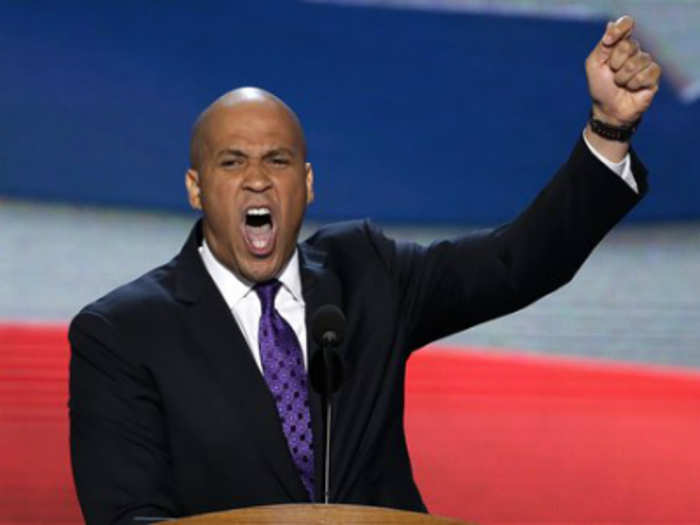
The mayor of relatively small Newark, Booker has become a national household name largely part because of his grasp of social media. He has been active on Twitter for the past few years, famously turning Twitter into a tool to aid his constituents during a massive 2010 snowstorm.
Since then, Booker has continued to dominate the Twittersphere and use it as a means of engaging with his constituents. During Hurricane Sandy, he invited neighbors who had lost electricity to his home to power up. In January, he responded to a call to pick up a dog out of the freezing cold. He has even used the medium to engage in a back-and-forth with a reporter over a story he didn’t like.
In the past year, Booker has also branched out his use of digital media. Booker is one of the big names backing #waywire, a new online video network aimed at young people.
Matt Drudge, Founder, The Drudge Report
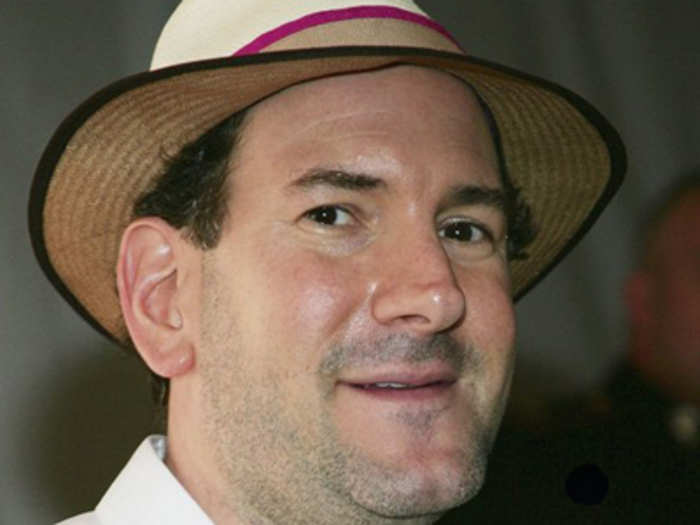
No one can single-handedly dominate a news cycle with as little effort as Matt Drudge, the conservative blogger behind the Drudge Report. Drudge and his site can drive the political conversation through a scoop — whether or not it turns out to be accurate — or by placing prominence on a story on The Drudge Report. And through it all, it’s usually no more than a sentence or two that leaves his readers with exactly the impression he wants to give them.
Although the Drudge Report site has not changed much since its 1997 debut, Drudge's influence continues to grow — he announced on his Facebook page at the end of 2012 that it was his biggest traffic year ever, with more than 11 billion visitors.
Popular Right Now
Popular Keywords
Advertisement
